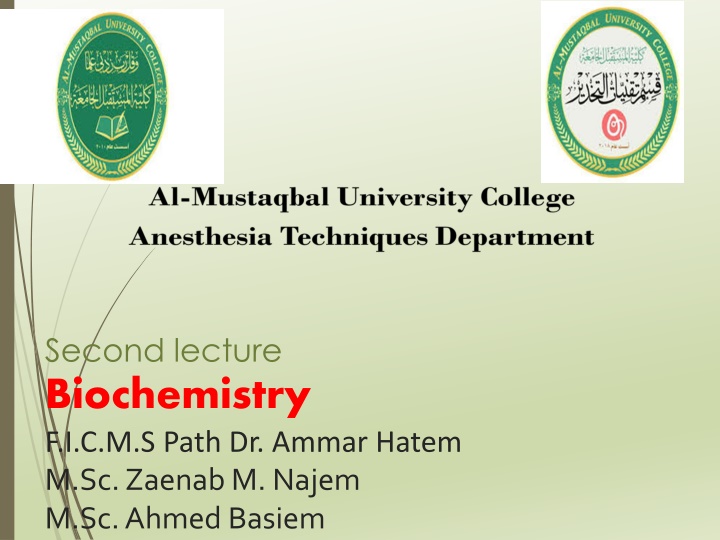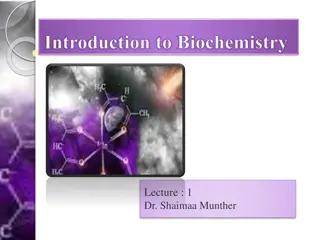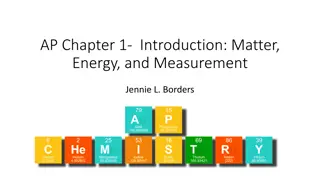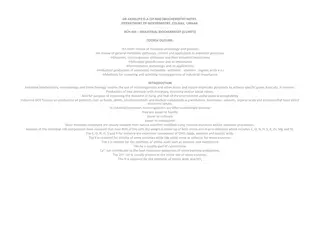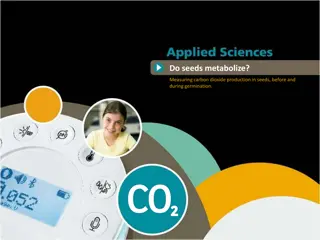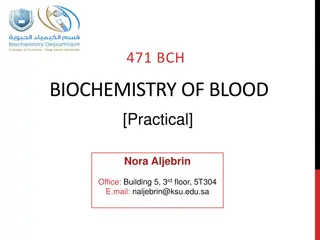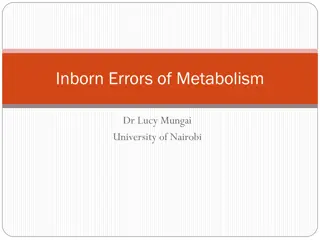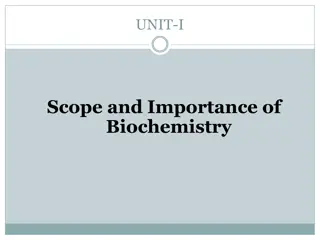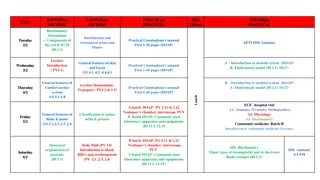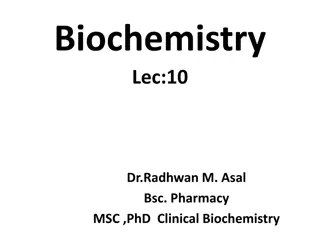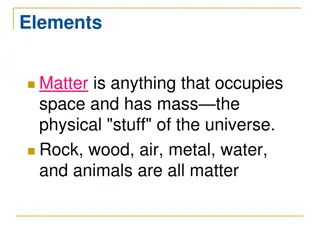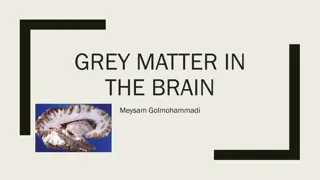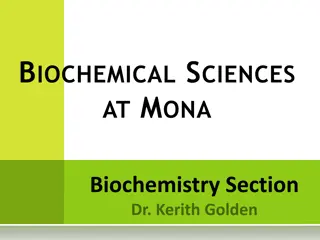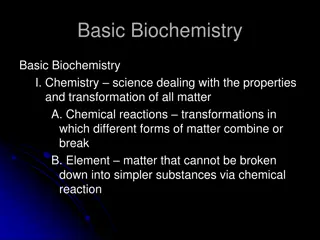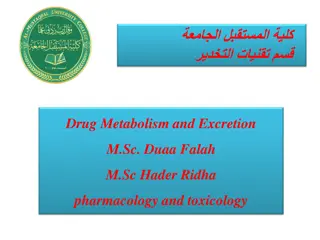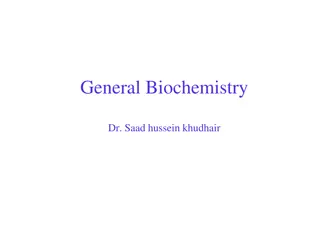Biochemistry: Study of Living Matter and Metabolism
Biochemistry is a branch of natural science that focuses on the chemical composition of cell parts and biological reactions within living cells. It delves into water, mineral salts, and organic compounds which are essential components of living matter. Metabolism, the biochemical process converting food into energy, involves anabolism and catabolism. The blood, containing red and white blood cells, plasma, and platelets, is a vital connective tissue in the body.
Download Presentation

Please find below an Image/Link to download the presentation.
The content on the website is provided AS IS for your information and personal use only. It may not be sold, licensed, or shared on other websites without obtaining consent from the author.If you encounter any issues during the download, it is possible that the publisher has removed the file from their server.
You are allowed to download the files provided on this website for personal or commercial use, subject to the condition that they are used lawfully. All files are the property of their respective owners.
The content on the website is provided AS IS for your information and personal use only. It may not be sold, licensed, or shared on other websites without obtaining consent from the author.
E N D
Presentation Transcript
Second lecture Biochemistry F.I.C.M.S Path Dr. Ammar Hatem M.Sc. ZaenabM. Najem M.Sc. Ahmed Basiem
Biochemistry it is one of the branches of natural sciences and it is specialized in studying the chemical composition of cell parts, and studying the different biological reactions that take place within these living cells, in terms of structure and composition, or in terms of catabolism and energy production ,whether they are simple organisms such as (bacteria, fungi and algae) or as complex as humans, animals and plants.
The basic components of living matter 1-Water: makes up a large proportion of the body of a living being, 60% of the adult human body , 70% in children , 97% in fetuses. 2-Mineral salts: a- Major metals such as (Cl,k,Na,Ca,P). b- Trace metals such as (Fe,Cu,F,I)
3-Organic compounds: a- Structural compounds: It includes four main components(H,O,N,C) such as Proteins, Fats, carbohydrate. These compounds make up the skeletal structure such as Membranes, Muscles ,Bones. b- Non-structural compounds:Functionally necessary, but not structured such as Hormones ,Enzymes, Vitamins.
Metabolism It is a biochemical process in which the body converts food into energy, through a series of chemical reactions in which it destroys nutrients inside the digestive system and turns them into energy through building and destroying cells and tissues.
Types of metabolism: 1- Anabolism: it is the process in which small molecules are converted into larger and more complex molecules of carbohydrates, proteins and fats. In this process body tissues are built up and energy stores. 2- Catabolism: it is a process that produces energy for cellular activities, in which large molecules, mostly fats and carbohydrates, are broken down to produce the energy needed for anabolic metabolism.
What Is The Blood is a liquid substance composed of red and white blood cells, plasma and platelets, a connective tissue, that is, a major tissue, and performs functions of great importance in the human body. The human body consists of 8% of the blood relative to its mass. Blood groups are divided into four main groups A, B,AB and O .
Blood functions 1- carry oxygen from the lungs and transfer it to tissues. 2- The carbon dioxide generated by the tissue returns to the lungs to induce exhalation. 3-Provides the body's cells with nutrients absorbed by the intestine to support them in the production of energy needed by the body to carry out activities. 4-The blood gives the body the immunity necessary to treat viruses and diseases through the production of white blood cells. 5- Blood preserves the water balance in the human body, keeping the water necessary for the body. 6-The blood maintains a balance of body temperature.
Major blood components: Blood consists of two important parts: Plasma: and make up 55% of the total volume of blood Blood cells: form 45% of the total blood volume A- plasma: It is the blood fluid that carries the rest of the blood components in addition to proteins and nutrients for the cells and tissues of the body. .
This is the liquid part in which the blood cells swim. They are pale yellow and water form 90% of the total plasma size The remaining 10% consists of the following: -Blood proteins (albumin, globulin, thrombin and fibrinogen) -Foods such as sugars, fats, vitamins, enzymes and hormones. -Extractive materials such as urea, creatinine and uric acid. -Inorganic substances such as potassium, calcium, sodium, iron, chlorine, magnesium and other elements.
B- Blood cells 1- Red blood cells: give blood its distinctive color and are responsible for transporting oxygen to cells and removing carbon dioxide. 2- White blood cells: These cells work as part of the immune system to help fight various diseases. 3- Platelets: are mainly responsible for coagulation processes
Obtained blood specimen 1- Receiving and welcoming the patient and writing the patient's name, file number and required analyzes. 2- Place the hand of the patient in a comfortable place so that the face of the hand to the top. 3- Attach the tourniquet with enough strength until the vein is visible. 4- Locates the vein by looking and touching together. 5- Clean the vein area with the medical alcohol until dry.
6- Lower the needle tooth in the hand at a 45 degree angle and gently pull the syringe handle. 7- When the extraction process is completed, remove the tourniquet and remove needle tooth and place the cotton pieces in place and press it with the finger. 8- The blood is drawn into the syringe and placed in the tubes with patient data written on the tubes.
